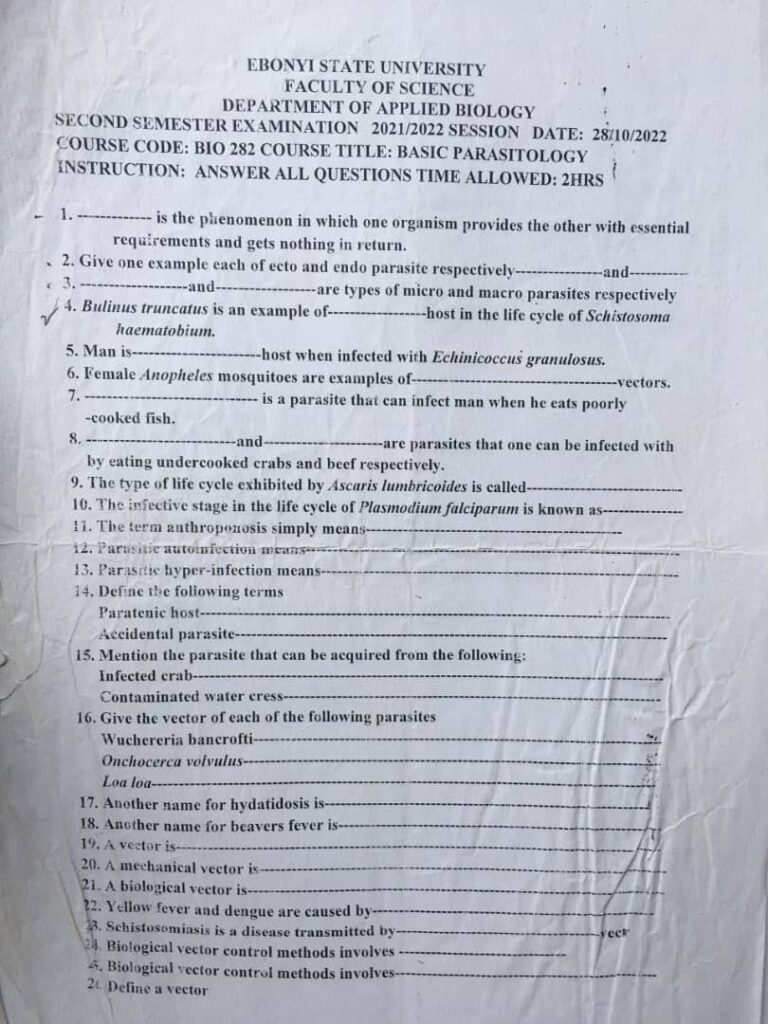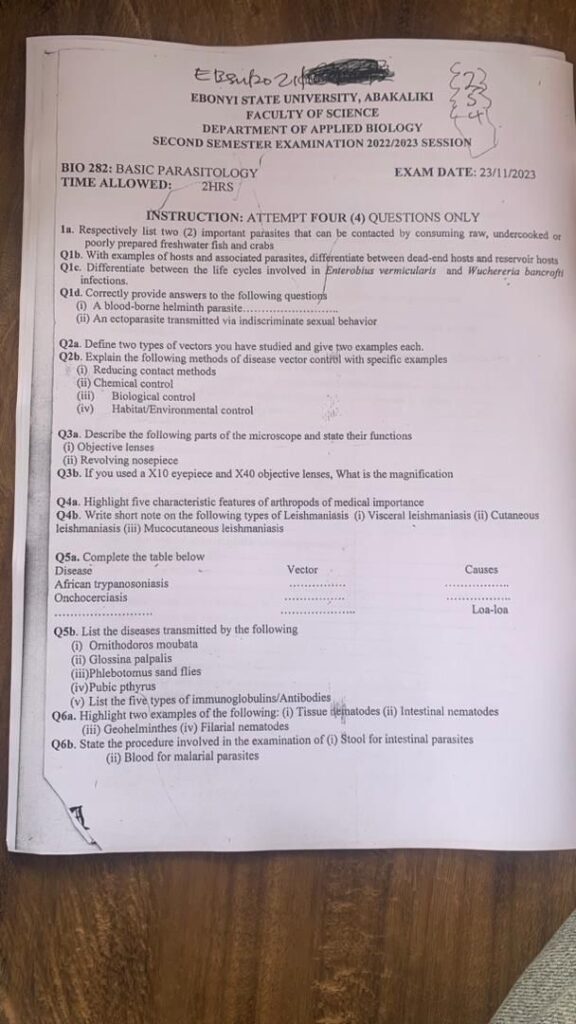

Q1a:
Two important parasites that can be contacted by consuming raw, undercooked, or poorly prepared freshwater fish and crabs:
- Clonorchis sinensis (Chinese liver fluke)
- Paragonimus westermani (Lung fluke)
Q1b:
Differences between dead-end hosts and reservoir hosts:
- Dead-end hosts: Organisms that get infected by a parasite but do not spread the infection to others (e.g., humans in the case of West Nile virus).
- Reservoir hosts: Organisms that harbor the parasite and can transmit it to others (e.g., rodents for Leishmania parasites).
Life cycle differences between Enterobius vermicularis and Wuchereria bancrofti:
- Enterobius vermicularis (Pinworm) has a simple direct life cycle with no intermediate host, while
- Wuchereria bancrofti requires an intermediate host (mosquito) for its life cycle, involving a vector to transmit microfilariae.
Q1d:
- Blood-borne helminth parasite: Plasmodium (causes malaria)
- Ectoparasite with indiscriminate sexual behavior: Pthirus pubis (pubic lice)
Q2a:
Two types of vectors and examples:
- Biological vectors: Mosquito (for malaria), Tsetse fly (for African trypanosomiasis)
- Mechanical vectors: Housefly (for dysentery), Cockroach (for foodborne diseases)
Q2b:
Methods of disease vector control with examples:
- Reducing contact methods: Using mosquito nets or repellents to avoid mosquito bites
- Chemical control: Insecticides like DDT for mosquito control
- Biological control: Using Bacillus thuringiensis bacteria to control mosquito larvae
- Habitat control: Draining stagnant water to eliminate mosquito breeding sites
Q3a:
Functions of microscope parts:
- Objective lenses: Magnifies the specimen at different levels (e.g., 10x, 40x, 100x)
- Revolving nosepiece: Holds the objective lenses and allows switching between different magnifications
Q3b:
Magnification with a 10x eyepiece and 40x objective lens:
- Total magnification = 10x * 40x = 400x
Q4a:
Five characteristic features of medically important arthropods:
- Exoskeleton
- Jointed appendages
- Segmented body
- Ability to transmit diseases
- Presence of antennae and compound eyes
Q4b:
Leishmaniasis types:
- Visceral leishmaniasis: Affects internal organs like the spleen and liver
- Cutaneous leishmaniasis: Affects the skin, causing ulcers
- Mucocutaneous leishmaniasis: Affects mucous membranes of the nose, mouth, and throat
Q5a:
Disease transmission table:
- African trypanosomiasis: Vector = Tsetse fly, Cause = Trypanosoma brucei
- Onchocerciasis: Vector = Black fly (Simulium species), Cause = Onchocerca volvulus
Q5b:
Diseases transmitted by:
- Ornithodoros moubata: Relapsing fever (caused by Borrelia)
- Glossina palpalis: African sleeping sickness (caused by Trypanosoma brucei)
- Phlebotomus sandflies: Leishmaniasis (caused by Leishmania species)
- Pubic pthyrus: Pubic lice infestation
Q6a:
Examples of nematodes:
- Tissue nematodes: Onchocerca volvulus (causes river blindness)
- Intestinal nematodes: Ascaris lumbricoides (causes ascariasis)
- Geohelminthes: Hookworm (Ancylostoma duodenale)
- Filarial nematodes: Wuchereria bancrofti (causes elephantiasis)
Q6b:
Procedures for examining:
- Stool for intestinal parasites: Perform a stool microscopy or concentration method to identify eggs, larvae, or cysts
- Blood for malarial parasites: Use a blood smear stained with Giemsa stain to detect the parasite under the microscope
Good one
Wow this platform is really helpful
God bless you 🙏🙏🙏🙏🙏🙏
I’m grateful to be here
Good job
Wow this platform is really helpful
God bless you 🙏🙏🙏🙏🙏🙏
I’m grateful to be here
Good job